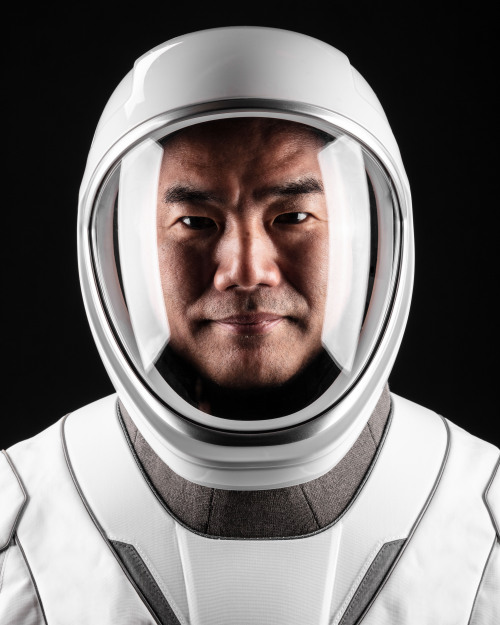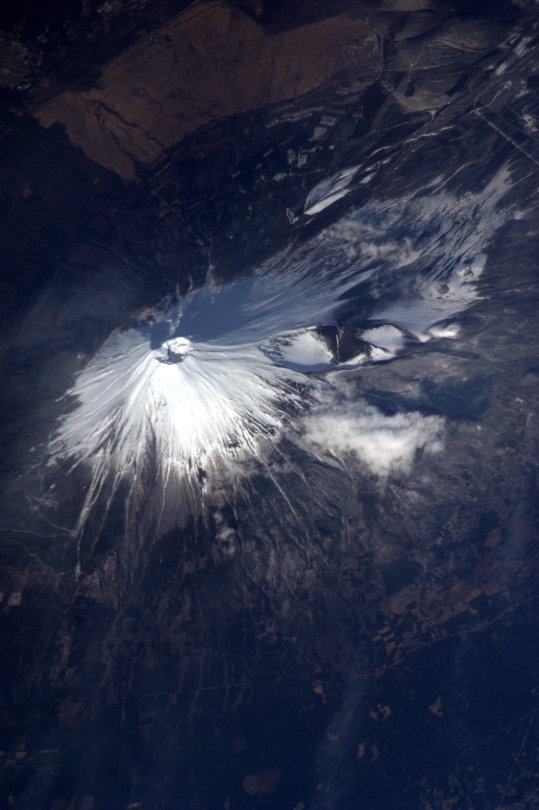Black Holes Dine On Stellar Treats!
Black Holes Dine on Stellar Treats!

See that tiny blob of light, circled in red? Doesn’t look like much, does it? But that blob represents a feast big enough to feed a black hole around 30 million times the mass of our Sun! Scientists call these kinds of stellar meals tidal disruption events, and they’re some of the most dramatic happenings in the cosmos.

Sometimes, an unlucky star strays too close to a black hole. The black hole’s gravity pulls on the star, causing it to stretch in one direction and squeeze in another. Then the star pulls apart into a stream of gas. This is a tidal disruption event. (If you’re worried about this happening to our Sun – don’t. The nearest black hole we know about is over 1,000 light-years away. And black holes aren’t wild space vacuums. They don’t go zipping around sucking up random stars and planets. So we’re pretty safe from tidal disruption events!)

The trailing part of the stream gets flung out of the system. The rest of the gas loops back around the black hole, forming a disk. The material circling in the disk slowly drifts inward toward the black hole’s event horizon, the point at which nothing – not even light – can escape. The black hole consumes the gas and dust in its disk over many years.

Sometimes the black hole only munches on a passing star – we call this a partial tidal disruption event. The star loses some of its gas, but its own gravity pulls it back into shape before it passes the black hole again. Eventually, the black hole will have nibbled away enough material that the star can’t reform and gets destroyed.

We study tidal disruptions, both the full feasts and the partial snacks, using many kinds of telescopes. Usually, these events are spotted by ground-based telescopes like the Zwicky Transient Facility and the All-Sky Automated Survey for Supernovae network.

They alert other ground- and space-based telescopes – like our Neil Gehrels Swift Observatory (illustrated above) and the European Space Agency’s XMM-Newton – to follow up and collect more data using different wavelengths, from visible light to X-rays. Even our planet-hunting Transiting Exoplanet Survey Satellite has observed a few of these destructive wonders!
We’re also studying disruptions using multimessenger astronomy, where scientists use the information carried by light, particles, and space-time ripples to learn more about cosmic objects and occurrences.

But tidal disruptions are super rare. They only happen once every 10,000 to 100,000 years in a galaxy the size of our own Milky Way. Astronomers have only observed a few dozen events so far. By comparison, supernovae – the explosive deaths of stars – happen every 100 years or so in a galaxy like ours.
That’s why scientists make their own tidal disruptions using supercomputers, like the ones shown in the video here. Supercomputers allow researchers to build realistic models of stars. They can also include all of the physical effects they’d experience whipping ‘round a black hole, even those from Einstein’s theory of general relativity. They can alter features like how close the stars get and how massive the black holes are to see how it affects what happens to the stars. These simulations will help astronomers build better pictures of the events they observe in the night sky.
Keep up with what’s happening in the universe and how we study it by following NASA Universe on Twitter and Facebook.
Make sure to follow us on Tumblr for your regular dose of space!
More Posts from Thehkr and Others


NASA Spotlight: Astronaut Soichi Noguchi
Soichi Noguchi was selected as an astronaut with the Japan Aerospace Exploration Agency in 1996. A native of Yokohama, Kanagawa, he is currently a mission specialist for NASA’s SpaceX Crew-1 launch taking flight to the International Space Station on Nov. 14. Soichi will be the first international crewmember on Crew Dragon and the first international partner astronaut to fly aboard three types of orbital spacecraft – the U.S. space shuttle, the Russian Soyuz, and now the SpaceX Crew Dragon! Talk about impressive. He received a B.S. in Aeronautical Engineering in 1989, master’s degree in Aeronautical Engineering in 1991, Doctor of Philosophy in Advanced Interdisciplinary Studies in 2020, all from the University of Tokyo.
Soichi took time from preparing for his historic mission to answer questions about his life and career:
You recently earned a doctorate in philosophy. What made you do it?
After my second flight, I started this research about your sensory system in zero gravity. I used a my own personal video, which I took during my last two flights at the International Space Station. I had a lot of interesting discussions amongst young professionals and students at the University of Tokyo about the research. It was a fun experience – but I would not do it again!
Space is a risky business. Why do it?
Space IS definitely a risky business. But the reward is higher than the risk so that’s why we take it.
Do you have a message for boys and girls in Japan who are interested in science and engineering?
Three words: Space. Is. Waiting.

Aside from mission objectives and tasks, what’s a personal goal for this mission?
We have a lot of interesting missions to do, but my personal goal is to return home with lots of fun stories.

What was it like to get the phone call to become an astronaut?
It was 25 years ago, but I still remember the voice vividly. I got a call from Dr. Mamoru Mohri, the very first JAXA astronaut, and he said “Welcome to the Astronaut Corps.” When I got the call to be part of the Crew-1 mission, I was a lot less nervous than when I was assigned to my first mission, but the excitement remains the same.
Can you describe your crew mate Mike Hopkins in one sentence?
He is a natural leader that takes care of the team really well, and he’s fun to play around with.

Star Trek or Star Wars?
Star Wars… just because!

Can you share your favorite photo or video that you took in space?
My favorite photo is Mount Fuji because I see the mountain almost every day when I was a child. It’s definitely breathtaking to see Mount Fuji from space.

What personal items did you decide to pack for launch and why?
I have lots of family photos, and I would put it inside my sleep station. Definitely one of the most challenging things about spaceflight is not experiencing zero gravity, not the rocket, but time away from family.
How would you describe spacewalking outside the space station?
It’s an excursion. The view of the Earth is just breathtaking because you are just one glass away from the vacuum of space. There’s nothing between you and Earth.

What are you most excited about for the future of human space exploration?
I would say I’m most excited for interplanetary travel to become more common so that the school kids can go to Mars on their field trip.
What would you say to someone looking to follow in your footsteps?
Don’t worry, be happy!
How has spaceflight evolved since your first launch and stay aboard the International Space Station in 2005?
This is definitely an exciting moment. We’re starting to see more players in the game. SpaceX is the frontrunner, but soon we’ll see Boeing, Sierra Nevada and Axiom. So the International Space Station will soon have more players involved, and it will be a lot more fun!
Thank you for your time, Soichi, and good luck on your historic mission! Get to know a bit more about Soichi and his NASA astronaut crew mates Victor Glover, Michael Hopkins, and Shannon Walker in the video above.
Watch LIVE launch coverage beginning at 3:30 p.m. EST on Nov. 14 HERE.
Make sure to follow us on Tumblr for your regular dose of space: http://nasa.tumblr.com
The Perseid Meteor Shower Is Here!

Image Credit: NASA/Bill Ingalls
The Perseids are at their peak this week!
The Perseid meteor shower, one of the biggest meteor showers of the year, will be at its brightest early in the morning on Wednesday, August 12. Read on for some tips on how to watch the night sky this week – and to find out: what exactly are the Perseids, anyway?

Credit: NASA/Bill Ingalls
Your best chance to spot the Perseids will be between 2 AM and dawn (local time) the morning of August 12. Find a dark spot, avoid bright lights (yes, that includes your phone) and get acclimated to the night sky.
Your eyes should be at peak viewing capacity after about 30 minutes; though the Moon may block out some of the dimmer meteors, you should still be able to see up to 15-20 an hour. If you’re not an early bird, you can try and take a look soon after sunset (around 9 PM) on the 11th, though you may not see as many Perseids then.

Credit: NASA/MEO
If it’s too cloudy, or too bright, to go skywatching where you are, you can try again Wednesday or Thursday night – or just stay indoors and watch the Perseids online!
Our Meteor Watch program will be livestreaming the Perseids from Huntsville, Alabama on Facebook (weather permitting), [link to come] starting around 9 p.m. EDT on August 11 and continuing through sunrise.
So… why are they called the Perseids?
Because all of a meteor shower’s meteors have similar orbits, they appear to come from the same place in the sky – a point called the radiant.

The radiant for the Perseids, as you might guess from the name, is in the constellation Perseus, found near Aries and Taurus in the night sky.
But they’re not actually coming from Perseus, right?

Credit: NASA/Joel Kowsky
Right! The Perseids are actually fragments of the comet Swift-Tuttle, which orbits within our solar system.
If you want to learn more about the Perseids, visit our Watch the Skies blog or check out our monthly “What’s Up” video series. Happy viewing!
Make sure to follow us on Tumblr for your regular dose of space: http://nasa.tumblr.com
How was it possible for the world to be so beautiful and so cruel at the same time?
Gillian Rubinstein (via quotemadness)
You’ve Heard “Houston, we’ve had a problem,” But Do You Know The Mission It’s From?
It’s the 50th anniversary of the Apollo 13 mission! NASA’s “successful failure,”Apollo 13 was to be the third lunar landing attempt, but the mission was aborted mid-flight after the rupture of a service module oxygen tank. The crew never landed on the moon, but due to the dedication and ingenuity of Mission Control, made it back to Earth safely. We’ve put some of the most important numbers of the Apollo 13 mission in perspective. Check it out!









Listen to the mission in real time, HERE.
Follow NASA History on Twitter and Facebook for more interesting information about aerospace history!
Check out the stats of all the Apollo Missions in the free e-book Apollo by the Numbers, HERE.










武田玲奈
tumbex




“The best preparation for tomorrow is doing your best today.”
— H. Jackson Brown
Every next level of your life will demand a different you.
Leonardo DiCaprio (via quotemadness)
-
 21stcenturyschizoidmiss liked this · 4 months ago
21stcenturyschizoidmiss liked this · 4 months ago -
 fandomhopper8 liked this · 4 months ago
fandomhopper8 liked this · 4 months ago -
 hyperfocused-trashpanda reblogged this · 1 year ago
hyperfocused-trashpanda reblogged this · 1 year ago -
 4everuriel liked this · 1 year ago
4everuriel liked this · 1 year ago -
 nearlynever liked this · 2 years ago
nearlynever liked this · 2 years ago -
 pgnsss liked this · 2 years ago
pgnsss liked this · 2 years ago -
 janiemcpants reblogged this · 2 years ago
janiemcpants reblogged this · 2 years ago -
 stardating reblogged this · 2 years ago
stardating reblogged this · 2 years ago -
 raggedybatman liked this · 2 years ago
raggedybatman liked this · 2 years ago -
 kadizlog reblogged this · 2 years ago
kadizlog reblogged this · 2 years ago -
 brushstroke1956 liked this · 2 years ago
brushstroke1956 liked this · 2 years ago -
 ririthu reblogged this · 2 years ago
ririthu reblogged this · 2 years ago -
 ririthu liked this · 2 years ago
ririthu liked this · 2 years ago -
 clown180 liked this · 2 years ago
clown180 liked this · 2 years ago -
 muzumi-san liked this · 2 years ago
muzumi-san liked this · 2 years ago -
 choppaburrata reblogged this · 2 years ago
choppaburrata reblogged this · 2 years ago -
 mountaingoat0112 liked this · 2 years ago
mountaingoat0112 liked this · 2 years ago -
 bigbearrr9 liked this · 2 years ago
bigbearrr9 liked this · 2 years ago -
 manhood101 liked this · 2 years ago
manhood101 liked this · 2 years ago -
 q-utie liked this · 2 years ago
q-utie liked this · 2 years ago -
 papierhaikuphoto liked this · 2 years ago
papierhaikuphoto liked this · 2 years ago -
 ava1enzue1a reblogged this · 2 years ago
ava1enzue1a reblogged this · 2 years ago -
 ava1enzue1a liked this · 2 years ago
ava1enzue1a liked this · 2 years ago -
 emilyshrimpton liked this · 2 years ago
emilyshrimpton liked this · 2 years ago -
 lastwave liked this · 2 years ago
lastwave liked this · 2 years ago -
 communistcatboi liked this · 2 years ago
communistcatboi liked this · 2 years ago -
 10months9months liked this · 3 years ago
10months9months liked this · 3 years ago -
 its-short-for-jackalope reblogged this · 3 years ago
its-short-for-jackalope reblogged this · 3 years ago -
 its-short-for-jackalope liked this · 3 years ago
its-short-for-jackalope liked this · 3 years ago -
 gothiberriez liked this · 3 years ago
gothiberriez liked this · 3 years ago -
 fancyjellyfishcake liked this · 3 years ago
fancyjellyfishcake liked this · 3 years ago -
 ziggzagg113 liked this · 3 years ago
ziggzagg113 liked this · 3 years ago -
 goosebumpsgoosebumps liked this · 3 years ago
goosebumpsgoosebumps liked this · 3 years ago -
 giulia1989ts liked this · 3 years ago
giulia1989ts liked this · 3 years ago -
 b4tm4nn liked this · 3 years ago
b4tm4nn liked this · 3 years ago -
 todayintokyo liked this · 3 years ago
todayintokyo liked this · 3 years ago -
 linzmj liked this · 3 years ago
linzmj liked this · 3 years ago -
 hey-bug reblogged this · 3 years ago
hey-bug reblogged this · 3 years ago -
 treasure8tesoro reblogged this · 3 years ago
treasure8tesoro reblogged this · 3 years ago -
 darkcomicsbookslibrariesthing liked this · 3 years ago
darkcomicsbookslibrariesthing liked this · 3 years ago -
 under--the--radar liked this · 3 years ago
under--the--radar liked this · 3 years ago -
 mydearwitcher liked this · 3 years ago
mydearwitcher liked this · 3 years ago